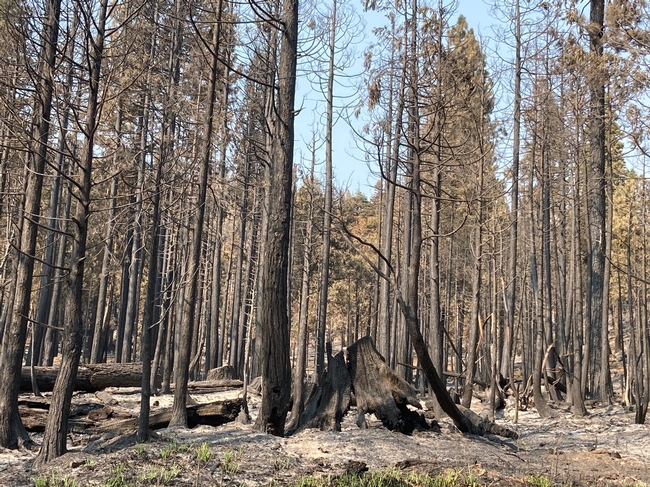High-severity megafires don't preclude future fires
In less than a decade, some of the burned expanses from this year's megafires could burst into intense flames again, reported Ula Chrobak in Scientific American.
Frequent, low-severity fires, which clear out patches of low-lying vegetation and dry leaf litter, have an preventative effect. Research shows that areas burned by megafires are more likely to become susceptible to fires again.
UC Cooperative Extension forestry advisor Susie Kocher said that a century ago, before officials quashed all wildfires, only 5% to 10% of Sierra Nevada fires would burn at high severity. Today, the proportion of high-severity fires is between 40% and 60%.
“That's way outside of what we think would have been natural,” Kocher said.
After high-severity fires, the landscape is scorched and shadeless. Without mother trees, it may take a long time, or even be impossible, for conifers to move back in. With open land and sunlight, shrubs sprout amid downed dead pines, which over time accumulate dead twigs and leaves. If there is a spark, the shrubbery and fallen wood can sustain another large fire.
“Ultimately, all of these lands are going to need management within anywhere from two to 10 years —and probably closer to two to five years after a fire—to maintain that reduction in fuel,” said Kate Wilkin, a fire scientist at San José State University. As climate change makes California hotter and drier, increasing the propensity for monstrous fires, this need will only grow.

